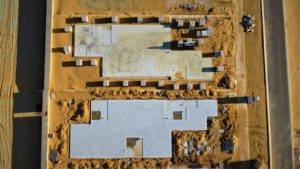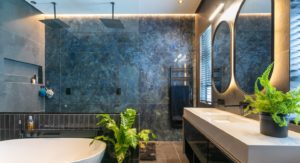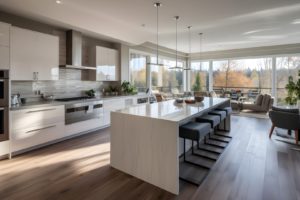
Solar Power For Your Home: Three Essential Questions Before You Invest
As South Africa’s energy landscape continues to evolve, solar power has become a practical solution for Johannesburg homeowners looking to reduce their reliance on traditional electricity sources. With abundant sunshine across the Highveld region, residential properties are perfectly positioned to harness this renewable energy. However, before making this significant investment, there are crucial considerations every homeowner should address.
The persistent reality of load shedding has transformed solar power from a luxury into a practical necessity for many South African households. Beyond merely surviving power outages, a well-designed solar system can significantly reduce monthly utility costs while increasing property value. As architectural experts working across Sandton, Bryanston, and Fourways, we at CF Architects have guided numerous clients through solar implementations that complement both their lifestyle needs and architectural aesthetics.
Before embarking on your solar journey, here are three fundamental questions you need to answer to ensure your investment delivers maximum value.

Understanding Your Solar System Options: Finding Your Perfect Match
Not all solar systems are created equal, and selecting the right configuration depends entirely on your specific requirements. The three primary categories each serve different purposes and come with distinct advantages:
Grid-Tied Systems: The Cost-Effective Entry Point
A grid-tied system remains connected to Eskom’s network while generating solar power during daylight hours. This configuration allows excess electricity to feed back into the grid (where regulations permit) and enables you to draw from the grid when solar production is insufficient. These systems typically represent the lowest initial investment but provide no power during outages—a significant consideration for South African homeowners dealing with load shedding.
Hybrid Systems: The Best of Both Worlds
Gaining popularity across Johannesburg’s upscale neighborhoods, hybrid systems combine grid connectivity with battery storage. This balanced approach provides protection against load shedding while still reducing monthly electricity costs. During normal operation, the system optimizes energy usage by storing excess production for peak demand periods, potentially eliminating the need to purchase expensive peak-time electricity.
Energy and Capacity Requirements: Designing For Your Lifestyle
Creating an effective solar solution begins with a thorough understanding of your household’s energy profile. Reviewing your recent electricity bills reveals your average daily consumption in kilowatt-hours (kWh), providing the baseline for system sizing. However, equally important is understanding your peak demand—moments when multiple high-consumption appliances operate simultaneously.
Modern Highveld homes often feature extensive climate control systems, sophisticated kitchen appliances, entertainment setups, and potentially electric vehicle charging facilities. Each element contributes to your overall energy requirements and influences system design. A comprehensive energy audit identifies consumption patterns and opportunities for efficiency improvements before finalizing solar specifications.
Inverter Selection: The System's Critical Component
The inverter—which converts DC electricity from solar panels and batteries into usable AC power—must be carefully matched to your home’s peak electrical demand. Selecting an undersized inverter creates a bottleneck that prevents your system from delivering sufficient power during high-usage periods, regardless of how many solar panels you install.
For instance, a typical luxury Fourways residence might require an 8-10kW inverter to handle simultaneous operation of air conditioning, cooking appliances, pool equipment, and entertainment systems. Including capacity for future expansion, such as electric vehicle charging, is also prudent planning. Quality inverters from reputable manufacturers offer better efficiency, longer warranties, and superior performance for sensitive electronic equipment.
Battery Capacity: Security During Power Interruptions
Battery storage requirements depend primarily on how long you need to power your home during grid outages or nighttime hours. This calculation involves identifying essential circuits that must remain operational during load shedding events.
A practical approach for many Bryanston homes involves creating tiered backup circuits: critical systems (security, refrigeration, essential lighting, internet) that require extended backup, and comfort systems (air conditioning, entertainment, full lighting) supported for shorter periods. This stratified design optimizes battery investment while ensuring essentials remain powered during extended outages.
Modern lithium iron phosphate (LiFePO4) batteries have become the standard for solar installations across Sandton due to their superior cycle life, higher discharge capacity, and lower maintenance requirements compared to traditional lead-acid alternatives. While representing a higher initial investment, their longer operational lifespan (often 10+ years) delivers better lifetime value.
Roof Suitability: The Foundation of Solar Efficiency
Even the most sophisticated solar components cannot overcome poor installation location. Your roof’s characteristics fundamentally determine system performance and installation feasibility.
Orientation and Exposure: Maximizing Solar Harvest
In South Africa’s interior, north-facing roof sections receive the most consistent sunlight throughout the year and typically deliver optimal solar performance. East-facing surfaces capture valuable morning sunlight, while west-facing areas benefit from afternoon exposure but may encounter temperature-related efficiency challenges during summer months. Properties with primarily south-facing roofs require special consideration, potentially including adjustable mounting systems to optimize panel orientation.
Professional site assessment includes solar pathfinding—mapping the sun’s path across your property throughout the year—to identify optimal panel placement. This process accounts for seasonal variations and potential shading from trees, neighboring structures, or architectural elements that could compromise system performance.
Financial Considerations: Making Solar Make Sense
The economics of solar power have improved dramatically over recent years, with system costs declining while electricity tariffs continue to rise. However, the investment remains substantial and warrants careful financial analysis.
System Costs: What to Expect
Investment scales according to system capability:
- Entry-level grid-tied systems (no batteries) typically range from R50,000 to R120,000
- Mid-range hybrid systems with moderate backup capacity generally fall between R150,000 and R250,000
- Comprehensive off-grid systems capable of powering luxury Sandton homes start around R300,000 and can exceed R600,000
These figures represent complete, professionally installed systems using quality components with appropriate warranties. While less expensive options exist, compromising on component quality often results in reduced reliability and shorter system lifespan.
Designing Your Solar Future
The transition to solar energy represents more than a practical response to South Africa’s energy challenges—it’s an investment in your property’s future value and your household’s quality of life. At CF Architects, we integrate solar planning into our architectural designs, ensuring systems complement rather than compromise aesthetic integrity while delivering optimal performance.
As you consider solar implementation for your Johannesburg home, these three fundamental questions—system type, roof suitability, and financial considerations—provide the framework for informed decision-making. By addressing each thoroughly, you’ll develop a solar strategy aligned with both your immediate needs and long-term objectives.
CF Architects specializes in integrating sustainable energy solutions into luxury residential properties across Johannesburg’s northern suburbs. Our architectural team collaborates with leading solar specialists to create systems that enhance both property functionality and aesthetic appeal.
Most Recent Articles

Custom Build or Major Renovation? Making the Right Home Choice for Your Future
For many South Africans, a house represents the single largest investment they’ll ever make. Whether you’re looking to establish roots

Beyond Functionality: Transforming Bathrooms into Luxury Living Spaces
In Johannesburg’s upscale neighborhoods, the evolution of bathroom design represents one of the most exciting shifts in residential architecture today.

Modern Farm Style Reimagined: Sophisticated Country Living in Urban Spaces
In the luxury residential landscape of Johannesburg and beyond, Modern Farm Style has transcended its rustic origins to become one

The Essential Role of Interior Architecture in Creating Your Dream Home
Interior architecture transforms a house into a uniquely personal sanctuary—a fundamental transition that discerning homeowners in Johannesburg’s upscale neighborhoods are
I'd Like More Information
CHOOSE A PLAN THATS RIGHT FOR YOU
Don't miss out on our latest news and offers - subscribe to our newsletter!
No Obligation, Complimentary Meeting.
